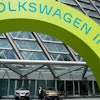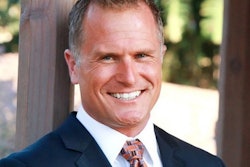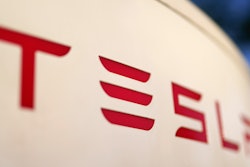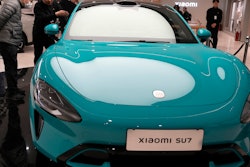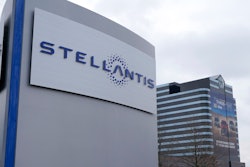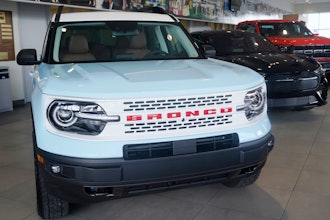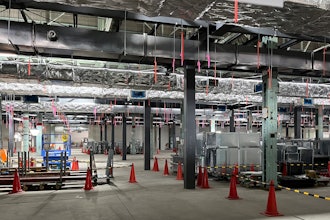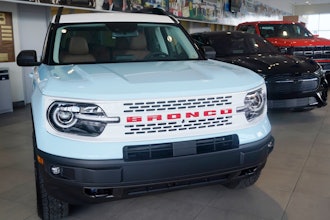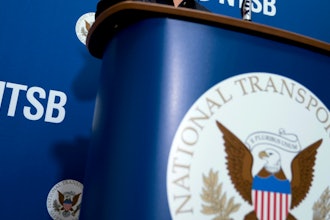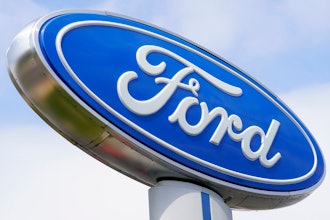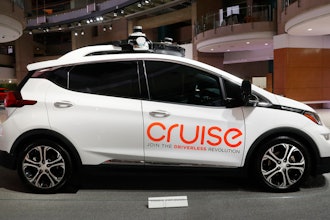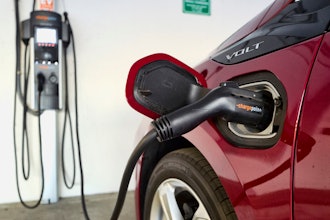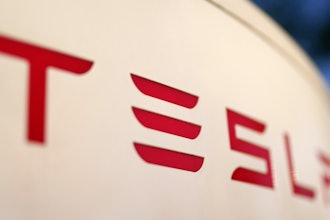KANSAS CITY, Mo. (AP) -- To call Tim Sylvester a road builder misses the point. The streets he intends to build are embedded with electronic sensors that may keep cars of the future from speeding, veering and crashing.
A few blocks from Sylvester's Integrated Roadways office in Kansas City, doctoral candidate Amol Khedkar is toiling on his own prototype for a software system that would let cars talk to one other, synchronizing their own movements. The vehicles could automatically change lanes and make turns without humans mucking things up.
Khedkar had better put the pedal to the metal. He's three years into his dissertation project — and in just that time, the worldwide race to develop so-called driverless vehicles has reached breakneck speeds.
Much of the technology already is on the streets. Newer, higher-end automobiles can parallel-park themselves, creep through traffic jams on their own, alert drivers to blind side intruders, keep wheels from rolling onto centerlines and spot deer in the road before headlights can.
Google and other innovators say they may be just five years away from having all the tools and know-how to market what researchers call "a fully autonomous vehicle" — where steering, braking and turns can be safely performed without manning the controls.
The bandied-about term "driverless" doesn't mean there's nobody at the wheel, though some scenarios project that day will come. Driverless means nobody needs to be there because internal and external sensors, plus satellite magic, allow the vehicle to drive itself.
The question has sped beyond whether or not technology will ever let motorists read a magazine en route to work — which techies say is a reality nearer than you think.
Rather, society has begun to ask: Do we really want this?
Computer engineer Don Wunsch voices an emphatic yes.
"The days of human drivers deserve to be numbered," said Wunsch, a professor at the Missouri University of Science & Technology in Rolla. "Humans are lousy drivers. It's about time computers take over that job."
Others note that the rush to make autos fully autonomous, and conceivably far safer, promises to run into huge societal bumps.
In a transportation center such as Kansas City, how many truckers won't be needed in 2025? How will insurance companies react when hands-free accidents happen — and nobody disputes they will — or roadside sensors go awry?
Will systems navigating 21st-century vehicles reach obsolescence and need costly upgrades every few years, like today's smartphones? And, perhaps the most critical question, who will make certain these innovations will make travel less deadly?
"You have these brand new capabilities coming to the market at a time of grossly inadequate funding" of federal safety regulators, said Clarence Ditlow of the Washington-based Center for Auto Safety, a watchdog group.
Only after risky "experimentation on the road," he said, will the public's overall safety in a driverless world be known.
Since 2011, three U.S. states where much of the corporate testing is taking place — California, Nevada and Florida — have enacted laws legalizing driverless vehicles. Michigan, Oklahoma and New Jersey have similar bills in the works.
Nevada last year issued the first license and special plates for a self-driven car, requiring an operator at the wheel. All models in development have manual override systems to let humans take over.
Still, in the absence of much political push-back against progress — and with corporate titan Google and virtually every car manufacturer around the globe leading the charge — a January headline in MotorTrend confidently trumpeted "The Beginning of the End of Driving."
The end is now for one Australian mining conglomerate, Rio Tinto Alcan. The company has ordered 150 autonomous trucks for its operations, saving more than $100,000 a year on each driver it needn't employ.
Google reports that its fleet of self-driven cars has logged more than 300,000 miles of testing without the computer systems causing an accident. (The company recently has acknowledged difficulties, however, navigating the cars through snow.)
Commuters in and around Mountain View, Calif., where Google is headquartered, are now accustomed to encountering Toyota Prius hybrids — mounted with "machine vision" cameras and emblazoned with Google stickers — seamlessly gliding through traffic.
Companies and scientists that promote computer-controlled driving note that human errors account for nine out of every 10 U.S. road fatalities.
In their visions of fully autonomous traffic, fuel would be saved and fewer vehicles would clog the streets. Families with three cars might rely on just one — taking Mom to work and returning home without a driver so others in the household can use it.
No single stroke of technology has powered the push toward self-driving cars. In fact, innovations dating back 20 or 30 years — cruise control, automatic breaking systems, GPS satellites — gradually gave rise to cars with their own minds.
Two endeavors in Kansas City reflect the variety of approaches being taken to make driving smarter:
—Khedkar, the UMKC graduate student, has developed a software program that he hopes will enable cars to continuously talk to each other when approaching intersections. Using remote-controlled model Ferraris he bought at Toys R Us, he intends to develop a working prototype by late summer.
"The software is ready to go," said Khedkar, a computer-science major. "We're seeing now how the hardware responds to perform exactly what the software tells it to do."
On that front, Khedkar and his professor, Vijay Kumar, concede they've a hill to climb.
But their ultimate fantasy features flocks of cars flowing, slowing down and turning corners in concert, each knowing what the other vehicles are thinking.
"We don't want, at the moment, to make a driverless car," said Kumar. "We just want to solve the problem of the traffic light."
If all vehicles carried the software system of Khedkar's dreams, traffic lights would be unnecessary. ("When I'm driving home late from a movie and stopped at a red light, waiting, and there's nobody around? I hate that," he said.) Intersections would be freed from human impulse and serendipity — "no ambiguity, no confusion" — as cars know and respect each other's intentions.
—Sylvester, the founder of Integrated Roadways, sees solutions in the pavement.
He is developing pre-cast sections of road armed with sensors. For the time being, he said, the sensors would monitor roadway stress and ice conditions, and he's already filled orders for the Kansas Department of Transportation for portions of Interstate 35.
In Sylvester's plans, coming generations of pavement would record traffic patterns, signal to emergency crews when a wreck happens, and have interspaced "charging pads" that provide a jolt of power to electric cars driving over them.
The driverless age ultimately would allow these in-road sensors to communicate with cars, navigating them away from hazards.
And Sylvester said that prospect needn't cost consumers a fortune.
"If we can increase safety...everyone deserves to have access," he said. "Most of this technology has already been developed" and he foresees the software systems enabling cars to decipher roadway commands to be "something you could get at Best Buy for a couple hundred dollars."
